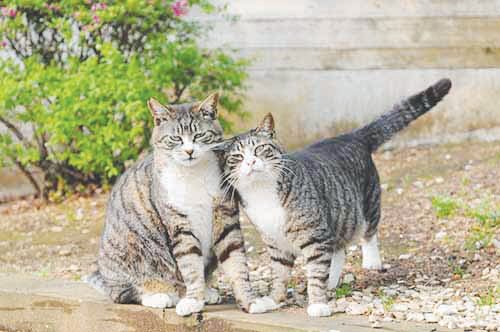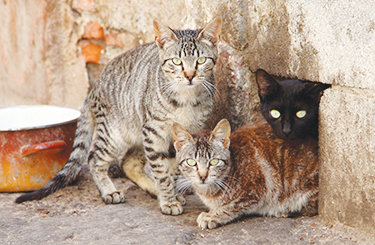Trap, neuter, return
Community Critter Care dedicated to addressing county cat crisis
MIDDLEBURG – Clay County has a feline problem.
Approximately 30,000 community cats, both domestic and feral, roam the area. Jane Hawley, of Community Critter Care of Clay County, is working hard …
This item is available in full to subscribers.
Attention subscribers
To continue reading, you will need to either log in to your subscriber account, or purchase a new subscription.
If you are a current print subscriber, you can set up a free website account and connect your subscription to it by clicking here.
If you are a digital subscriber with an active, online-only subscription then you already have an account here. Just reset your password if you've not yet logged in to your account on this new site.
Otherwise, click here to view your options for subscribing.
Please log in to continueDon't have an ID?Print subscribersIf you're a print subscriber, but do not yet have an online account, click here to create one. Non-subscribersClick here to see your options for subscribing. Single day passYou also have the option of purchasing 24 hours of access, for $1.00. Click here to purchase a single day pass. |
Trap, neuter, return
Community Critter Care dedicated to addressing county cat crisis
MIDDLEBURG – Clay County has a feline problem.
Approximately 30,000 community cats, both domestic and feral, roam the area. Jane Hawley, of Community Critter Care of Clay County, is working hard to change that. On Mondays and Tuesdays, she is awake at 3.30 a.m. and out trapping stray cats to prepare them to be neutered, spayed and then returned to their environments.
In 2015, then Orange Park Councilman Steve Howard proposed community cats not be fed if without written permission of the owner of the cat. The proposed ordinance upset many people who were feeding of the cats and didn’t want them to starve. The ordinance was put before an Ad Hoc committee for further examination. Hawley was on that committee.
“We basically researched the issue of this ordinance,” Hawley said. “Everybody agrees that TNR [trap, neuter and return] was the way to go in dealing with the problem of too many community cats.”
A community cat is one that falls into any of three categories: homeless, domestic or feral. Community cats often have some sort of caregiver. A caregiver is a person that usually feeds a community cat and, in some cases, ensures the cats’ medical attention.
Cats fall into the “community” category by different means. Homeless domestic cats often end up that way after being abandoned by transient military personnel. Feral cats are wild and are even more problematic because they can’t be touched or handled by people. These cats live in groups of two to 50. If left unchecked, their numbers can soar exponentially due to the fact they have multiple breeding cycles annually.
Right now, Hawley is the person out in the field of trapping the community cats for CCC. She uses different traps such as drop and humane. The drop trap is nothing more than a box held up by stick or something close with a long string or rope tied to whatever is holding the box up at an angle. Once the cat is under the box, the string/rope is pulled and the box drops, containing the cat. The humane taps are simply those with an open door and bait – Hawley likes to use a liver and chicken pate’, as it has a strong scent to lure the cats – on the opposite end of the cage. Once the cat enters the cage and walks over a pressure plate to get to the bait, the door of the trap is released and closes, containing the cat.
Jane then returns to one of the holding facilities where the cats must remain without food and drink for at least eight hours prior to being neutered or spayed to allow them to be placed under anesthesia. Once the felines are rendered infertile, they are released.
“Our goal for this year is to do more target, large en-masse spay and neuter projects,” said Hawley. “These targeted TNRs are the only way that you can really bring the numbers down.
Overall, TNR is a more effective method than euthanasia. Even if it was possible to euthanize many community cats at once – and it isn’t – they eventually would return.
Community Critter Care is also teaching the caregivers what to do. They are instructing in how to trap humanely, how to contact people to provide medical care for the cats, and proper feeding techniques. In short, they are teaching caregivers how to take care of some of their own colony issues. For more information, contact claycrittercare@gmail.com.











